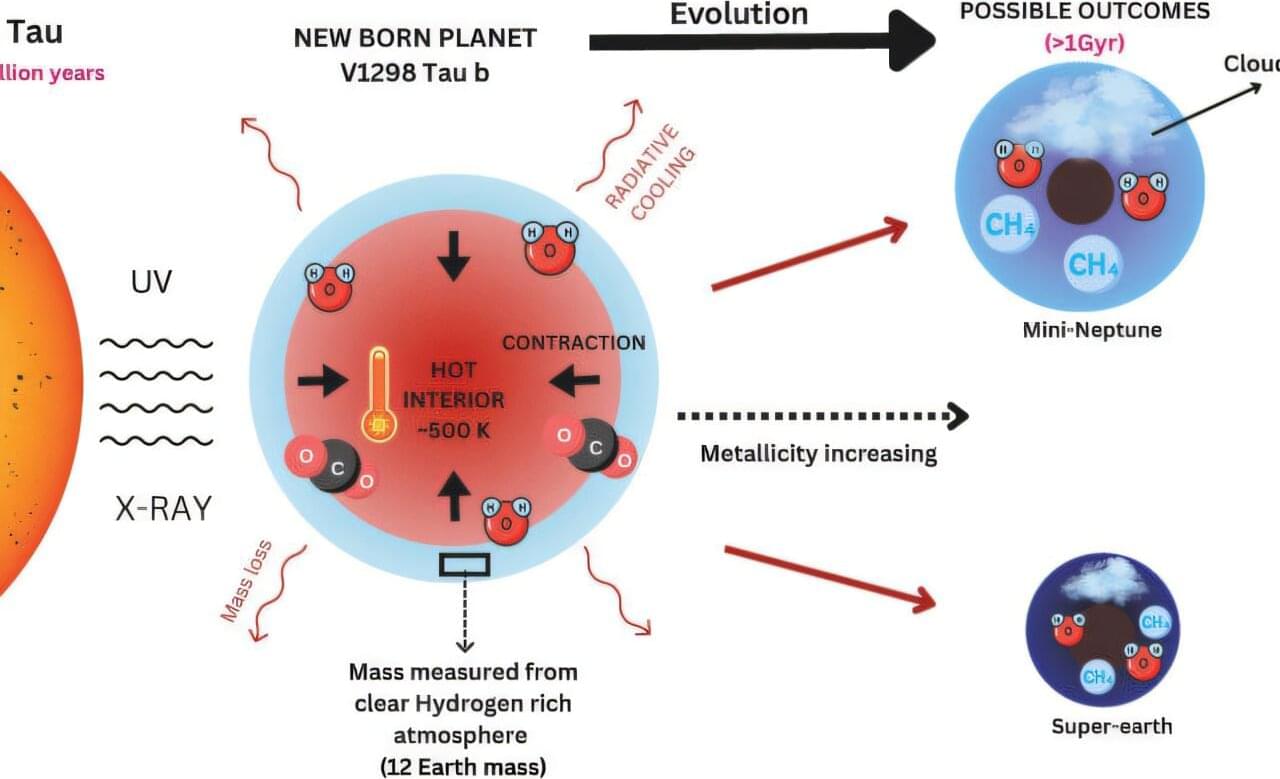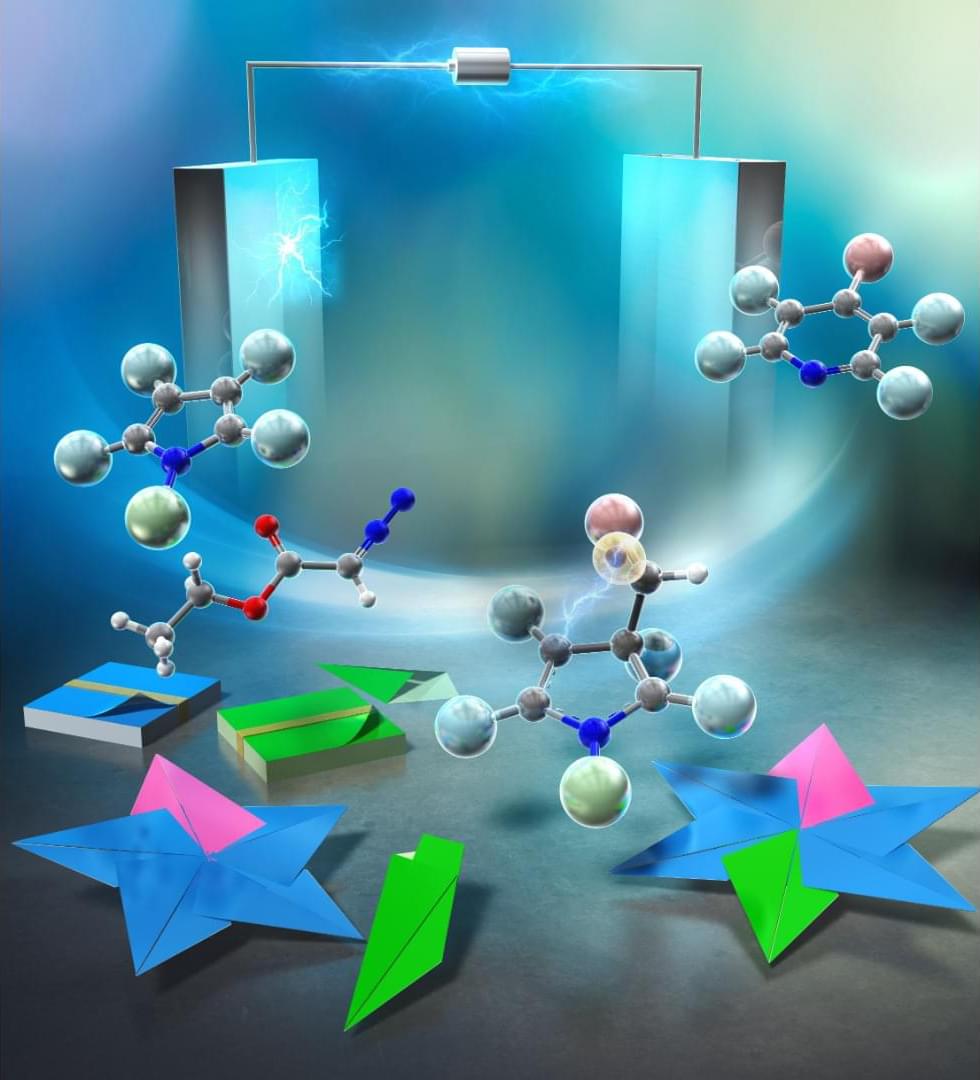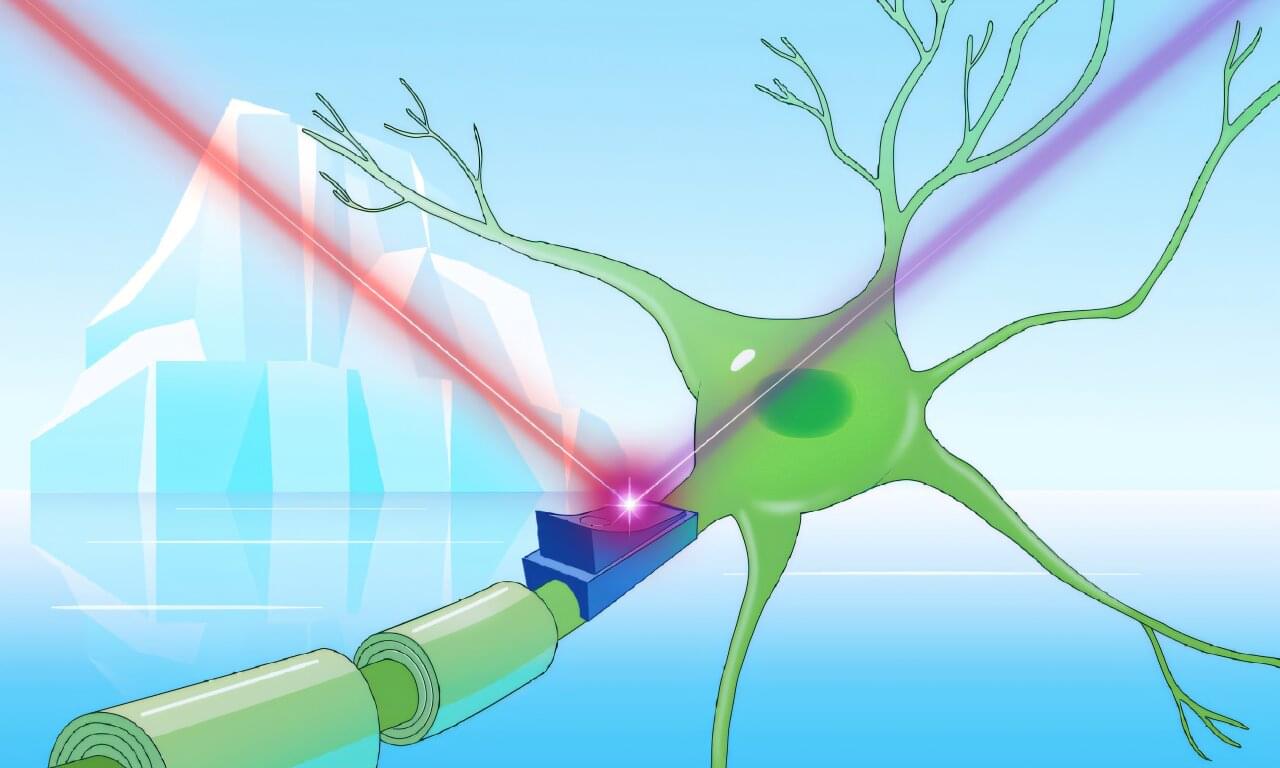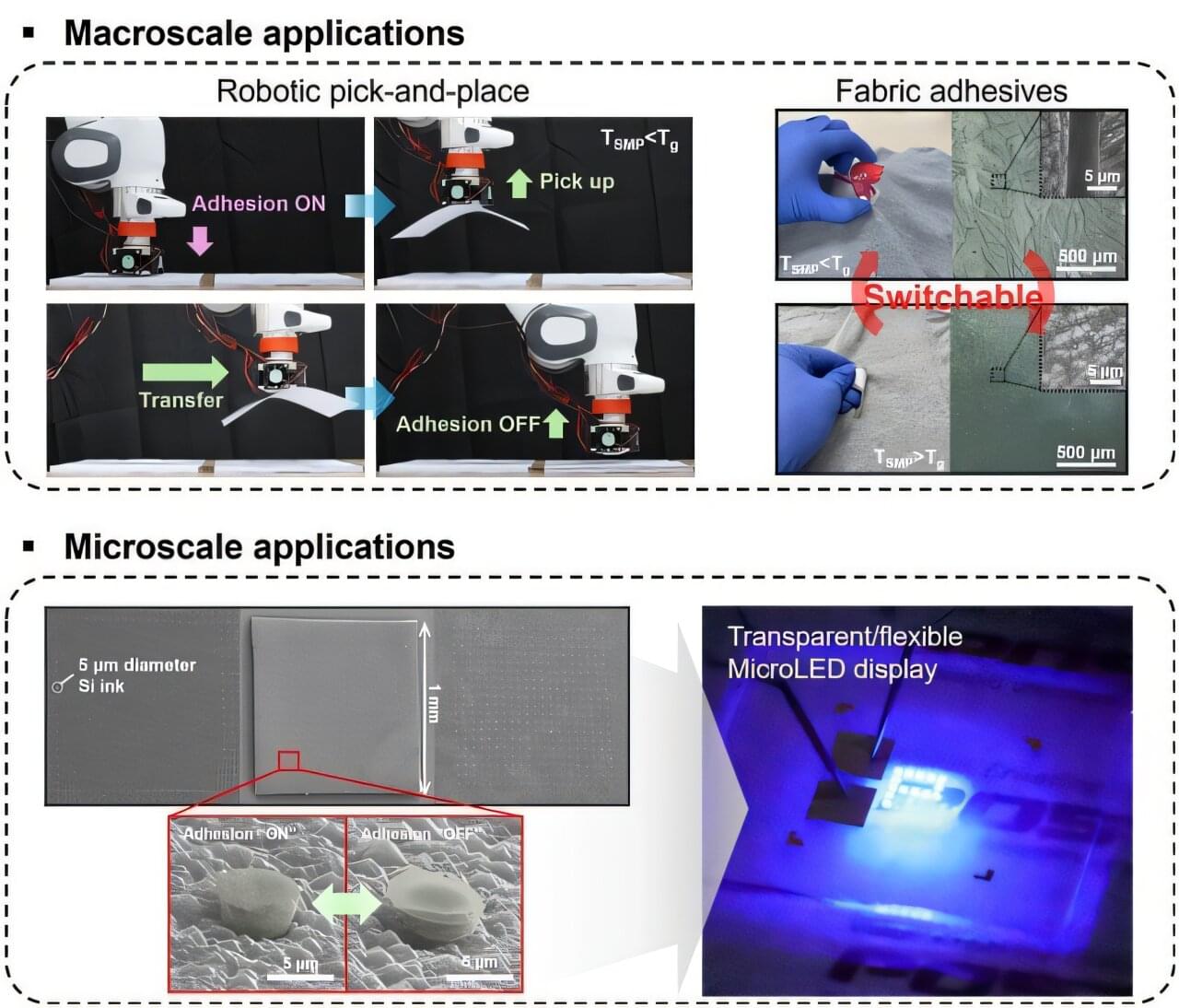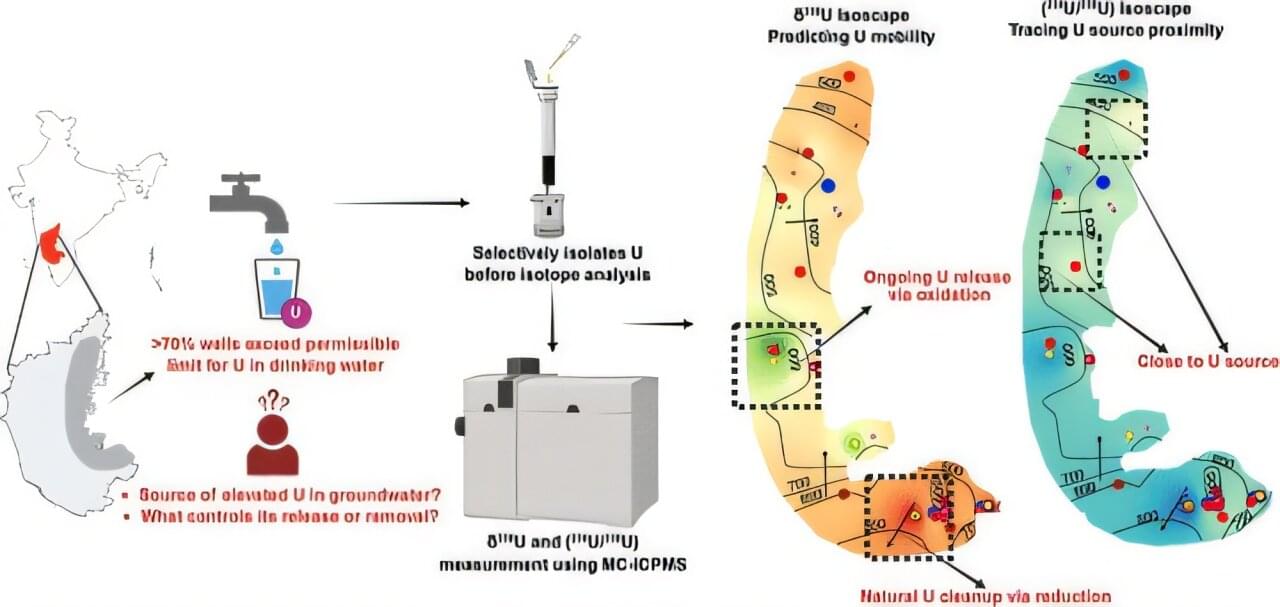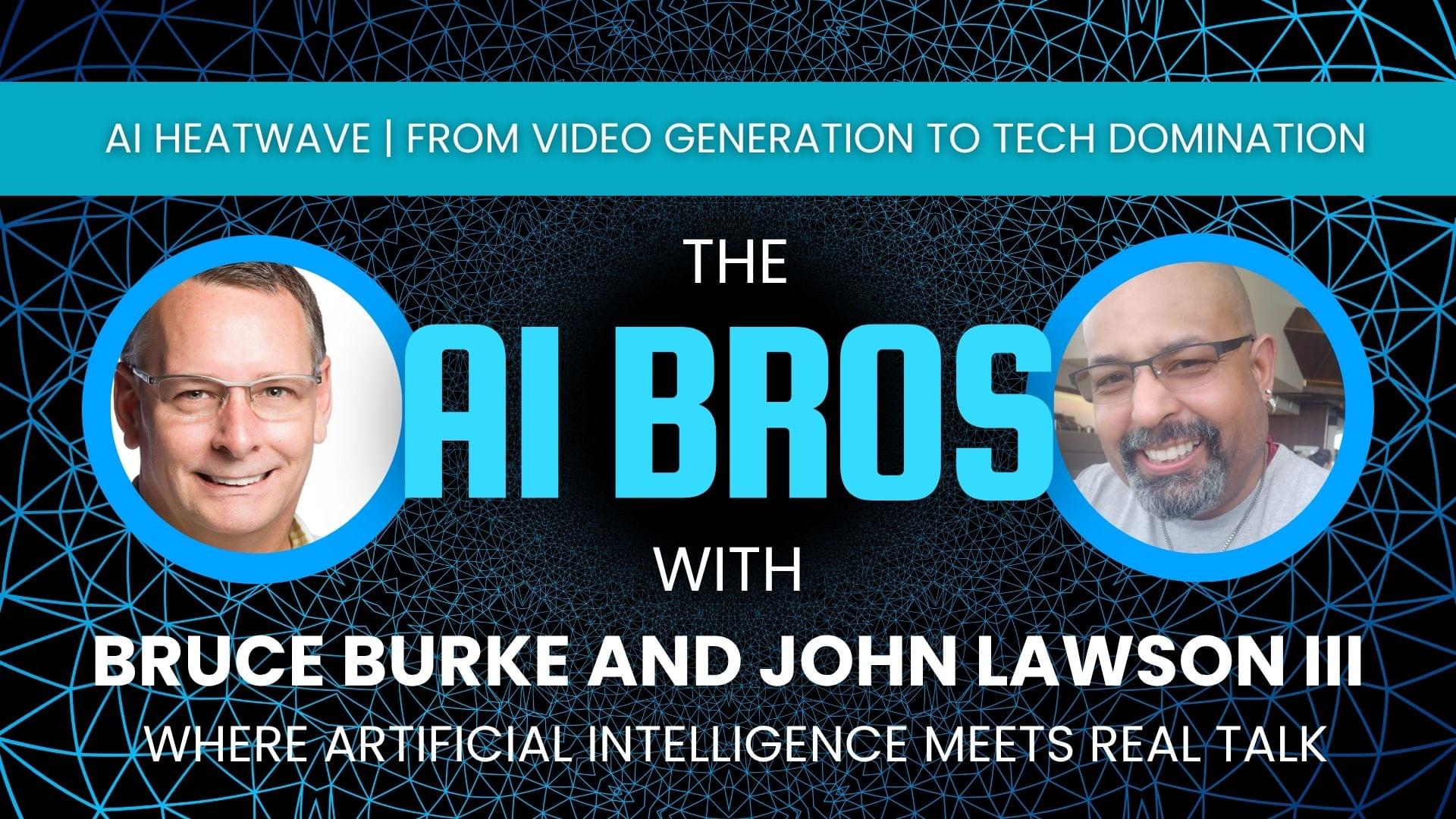Astronomers have characterized the atmosphere of a young (20 Myr old) transiting exoplanet and found it to be unusually clear and puffy. By analyzing the planet’s atmospheric features, they were able to precisely measure the planet’s mass surpassing traditional dynamical techniques like radial velocity, which poorly perform with such active young stars. They found that V1298 Tau b is a proto-sub-Neptune, still hot and inflated from its recent formation.
The team, led by Saugata Barat (MIT, MA, US) and his Ph.D. supervisor Jean-Michel Désert (UvA, Netherlands) used the James Webb Space Telescope to study the very young planet, and their results are accepted for publication in the Astrophysical Journal and currently available on the preprint server arXiv.
V1298 Tau b is just 10 to 30 million years old and has an unusually clear and puffy atmosphere. The astronomers detected strong absorption signals from molecules like water vapor, methane, carbon dioxide, carbon monoxide, and even hints of complex photochemical processes, such as tentative detections of sulfur dioxide (SO₂) and carbonyl sulfide (OCS).
